20 Home Remedies For Cracked Heels + Causes & Prevention Tips
Tread without caution with natural options to heal that cracked skin on your heels.
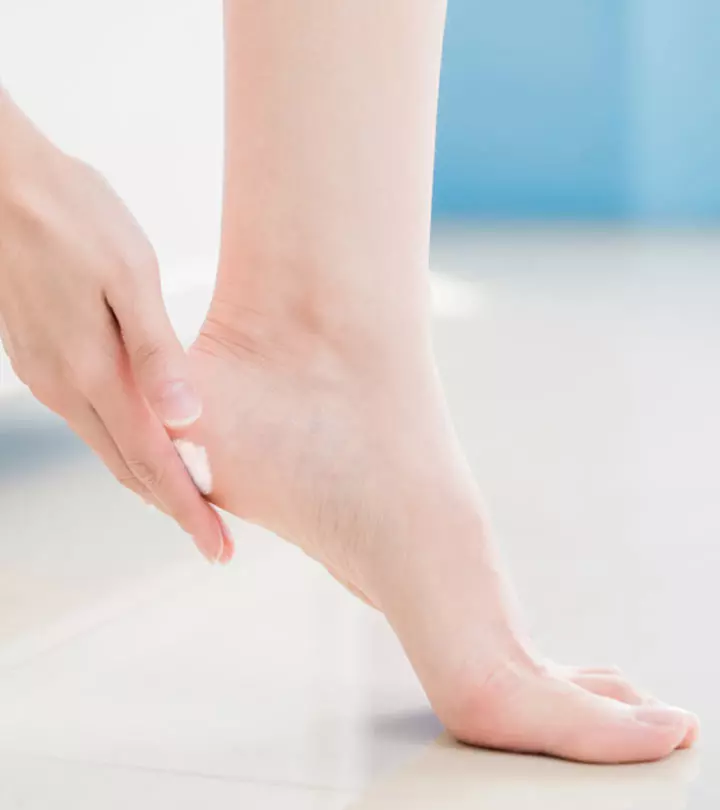
Image: Shutterstock
Cracked heels aren’t a big deal for most people, but they can be uncomfortable if they’re deep. These cracks can also cause bleeding. Home remedies for cracked heels focus on nourishing the skin and hydrating it to prevent further cracking and speed up the healing process.
Cracked heels are also known as heel fissures and are a frequent foot problem. According to a poll done by NPD, cracked heels affect 20% of US individuals aged 21 and above (1). They affect both children and adults and appear to be more severe in women. You need to understand the causes of cracked heels to know how to treat them. Dehydration, bad shoes, and certain medical conditions can make cracked heels worse. This guide shares some remedies that will help keep your feet healthy. This article discusses various natural remedies you can use to help heal your cracked heels. Keep reading.
In This Article
What Causes Dry, Cracked Feet?

The skin on the soles of the feet tends to become drier as there are no oil glands present there. This dryness causes the skin to crack. Lack of moisturization, overexposure to pollution, and medical conditions, such as eczema, diabetes, thyroid, and psoriasis lead to dry and cracked feet. Read on to learn more about the home remedies for treating cracked heels.
A study conducted on 203,813 participants found the prevalence ranging from 3.6% among those aged 18 to 34 to 8.3% among those aged 75 and older. Furthermore, eczema was higher in Asian (6.5%) and White (6.2%) participants compared to Black (5.1%) and Hispanic (4.1%) participants.
Key Takeaways
- Dryness, pollution, or medical conditions can cause cracked heels.
- Wearing comfortable socks and shoes can prevent cracked heels.
- A foot mask containing salt, rose water, and glycerine is good for smooth, moisturized feet.
- Scrubbing your feet regularly helps remove dead skin cells and keep your feet soft and clean.
- Using oils to massage your heels improves circulation and provides hydration. You can use coconut oil to get rid of rough, dry skin and heal cracked feet.
Remedies To Get Rid Of Cracked Heels
1. Salt, Glycerine, And Rose Water Foot Mask
Rose water
contains antioxidants that prevent cell damage. It also has anti-inflammatory properties that may help relieve dry and irritated skin (2), (3). Glycerine is an effective humectant that helps your skin retain its natural moisture levels (4). These properties can help moisturize cracked heels.
You Will Need
- 1 tablespoon of salt
- 2 tablespoons of glycerine
- 2 teaspoons of rosewater
- Warm water
- Pumice stone/foot scrubber
What You Have To Do
- Add raw salt, one tablespoon of glycerine, and one teaspoon of rosewater to a basin filled with warm water. Soak your feet in this mixture for about 15-20 minutes.
- Scrub your heels and the sides of the feet with a pumice stone or a foot scrubber.
(Or)
- Mix one teaspoon of glycerine, and one teaspoon of rosewater and apply it on your cracked heels. Since this will be a sticky mixture, you can wear a pair of socks and leave them on overnight.
- Wash off with lukewarm water in the morning.
How Often You Should Do This
Repeat this for a few days.
2. Vegetable Oil
Studies show that vegetable oils like almond oil and jojoba oil contain emollient properties, along with antimicrobial, antioxidant, anti-inflammatory, and wound-healing properties.
They act as nutritional building blocks for healthy skin. These potent qualities of vegetable oils can help treat cracked heels (5).
You Will Need
2 teaspoons of vegetable oil
What You Have To Do
- Wash your feet and dry them with a clean towel. Apply a layer of vegetable oil on the affected area.
- Wear a pair of thick socks and leave them on overnight.
- Wash your feet in the morning.
How Often You Should Do This
Do this daily before going to bed.
3. Banana and Avocado Foot Mask
Avocado contains vitamins A, E, and omega fatty acids and other nutrients that promote wound healing
(6). Banana works as a moisturizer. These properties may help treat cracked heels.
You Will Need
- 1 ripe banana
- 1/2 avocado
What You Have To Do
- Blend a ripe banana and half an avocado.
- Apply this thick, creamy paste over your heels and feet.
- Keep it on for 15 to 20 minutes and then wash off your feet with lukewarm water.
How Often You Should Do This
Do this daily.
4. Petroleum Jelly
Petroleum jelly helps restore moisture to dry and cracked heels. It reduces water loss from the outer skin. This keeps your skin hydrated and soft (4). Woolen socks help trap the body’s heat and increase the effectiveness of the mixture.
You Will Need
- 1 teaspoon of Vaseline
- Moisturizer
- Pumice stone
- Lukewarm water
What You Have To Do
- Soak your feet in warm water for about 15-20 minutes.
- Use the pumice stone to scrub any hard or dry skin. Pat your feet dry.
- Apply moisturizer to the affected area.
- Apply Vaseline over it to lock in moisture.
- Put on a pair of woolen socks. Keep them on overnight and wash your feet in the morning.
How Often You Should Do This
Do this regularly before going to bed.
5. Paraffin Wax Natural Remedy
Paraffin wax acts as a natural emollient that helps soften your skin. It is an effective treatment for cracked and sore heels (7).
You Will Need
- 1 tablespoon of paraffin wax
- 2-3 drops of mustard/coconut oil
What You Have To Do
- Mix paraffin wax with mustard oil or coconut oil.
- Heat the mixture in a pan until the wax melts properly.
- Allow this mixture to cool down to room temperature. Apply it to your feet before going to bed and wear a pair of socks.
- Wash off in the morning.
How Often You Should Do This
1-2 times a week before going to bed.
Caution: Do not dip your feet in the wax when it is hot. If you have diabetes, do not try this treatment.
6. Honey
Honey is a natural antiseptic that helps heal cracked feet, and its soothing properties help revitalize the skin (8).
You Will Need
- 1 cup honey
- Warm water
What You Have To Do
- Mix one cup of honey in half a bucket of warm water.
- Soak your feet for about 15-20 minutes in the water-honey mixture.
- Scrub off gently.
How Often You Should Do This
Do this regularly for soft and supple feet.
7. Rice Flour
Rice flour can help exfoliate
, purify, and remineralize the skin, making it satin-smooth and soft (9).
You Will Need
- 2-3 tablespoons of ground rice
- 1 teaspoon of honey
- 3-4 drops of apple cider vinegar
What You Have To Do
- Mix two to three tablespoons of ground rice with a few drops of honey and apple cider vinegar to make a thick paste.
- If your heels are extremely dry and cracked, you can add a teaspoon of olive oil or sweet almond oil to the mixture.
- Soak your feet in warm water for 10 minutes and gently scrub it with the paste to remove dead skin cells from your feet.
How Often You Should Do This
Apply this foot scrub 2 times a week.
8. Olive Oil
Olive oil
has nourishing properties that make your skin soft and supple (10). However, it is not suitable for all skin types. Therefore, do a patch test before using it on the affected area.
You Will Need
1 tablespoon of olive oil
What You Have To Do
- Apply some olive oil with the help of a cotton ball and gently massage your feet in a circular motion for 10-15 minutes.
- Wear a pair of thick cotton socks and wash off after an hour.
How Often You Should Do This
Do this daily.
9. Oatmeal Remedy
Oatmeal has anti-inflammatory and moisturizing properties that help get rid of dead skin on your feet and soften the skin (11).
You Will Need
- 1 tablespoon of powdered oatmeal
- 4-5 drops of olive oil
What You Have To Do
- Mix the powdered oatmeal and olive oil to make a thick paste.
- Apply this paste to your feet, especially over the heels and any cracked parts. Leave it on for about half an hour.
- Rinse with cold water and pat dry.
How Often You Should Do This
Do this every alternate day.
10. Sesame Oil
Sesame oil has nourishing, moisturizing, and skin barrier repairing properties (12). This helps soften and soothe dry and cracked feet.
You Will Need
4-5 drops of sesame oil
What You Have To Do
- Apply sesame oil to your heels and any other cracked parts.
- Massage well until it is absorbed by the skin.
How Often You Should Do This
Do this daily before going to bed.
11. Coconut Oil
Coconut oil moisturizes dry skin and also helps get rid of dead skin cells (13). It can penetrate to the deeper layers of the skin and nourish them (14).
You Will Need
- 2 tablespoons of coconut oil
- A pair of socks
What You Have To Do
- Apply coconut oil liberally on your feet.
- Slip on the socks and go to bed.
- Shower as usual in the morning.
How Often You Should Do This
Repeat this for a few days.
 Quick Tip
Quick Tip12. Listerine Soak
Soaking your feet in Listerine can soften the hardened dead skin and make it easier to be scrubbed off. Listerine is also an antiseptic and soothes the skin because of the phytochemicals like menthol and thymol that are present in it. However, there is no scientific evidence to back these effects.
You Will Need
- 1 cup Listerine
- 1 cup white vinegar
- 2 cups of water
- A basin
- Foot file or pumice stone
What You Have To Do
- Soak your feet for 10-15 minutes in the liquid mix containing the above-mentioned ingredients.
- Remove your feet and scrub them using the foot file or pumice stone to slough off the dead skin.
- Rinse with clean water, pat dry, and moisturize.
How Often You Should Do This
Repeat this every day for 3-4 days until the dead skin wears off.
13. Baking Soda
Baking soda is a commonly used exfoliant (15). It removes dead cells and also soothes the skin. However, this remedy is better to avoid if you have deep fissures which appear like wounds.
You Will Need
- 3 tablespoons of baking soda
- Warm water
- A bucket
- Pumice stone
What You Have To Do
- Fill two-thirds of the bucket with warm water and add the baking soda. Mix well until the baking soda dissolves in the water.
- Soak your feet in this mixture for 10 to 15 minutes.
- Remove your feet from the soak and scrub gently with the pumice stone.
- Rinse with clean water.
How Often You Should Do This
Do this 2 times a week.
14. Apple Cider Vinegar
The mild acids present in ACV act as chemical exfoliators (16). They help soften the dry and dead skin and reveal fresh and healthy skin.
You Will Need
- 1 cup apple of cider vinegar
- Warm water
- A basin
What You Have To Do
- Fill the basin with enough water to soak your feet in – about three to four cups.
- Add the apple cider vinegar and mix well.
- Soak your feet in the water for about 15 minutes and scrub to remove the dead skin from your feet.
How Often You Should Do This
Repeat this the next day or after a day’s gap, if required.
15. Epsom Salt
Epsom salt softens the skin and also soothes tired feet (17). It also improves skin barrier function, reduces inflammation, and keeps your skin hydrated (18).
You Will Need
- 1/2 cup of Epsom salt
- Warm water
- A foot basin
What You Have To Do
- Fill the foot basin with water and mix Epsom salt in.
- Soak your cracked feet in this for 15 minutes. Scrub to remove dead skin.
How Often You Should Do This
Repeat this 2-3 times a week.
16. Aloe Vera
Aloe vera soothes dry and dead skin. It heals the ridges and cracks that have formed by increasing collagen synthesis. The amino acids present in it help soften the skin (19).
You Will Need
- Aloe vera gel
- Lukewarm water
- Foot basin
- A pair of socks
What You Have To Do
- Soak your feet in lukewarm water for a few minutes.
- Pat dry and apply aloe vera gel liberally on your feet.
- Wear socks and leave the gel on your feet overnight.
How Often You Should Do This
Repeat this every night for 4-5 days.
17. Tea Tree Oil
Tea tree oil helps reduce inflammation
(20). It also has wound-healing properties that help in healing the cracks. Coconut oil (or love oil) moisturizes dry skin and heals cracks.
You Will Need
- 5-6 drops of tea tree oil
- 1 tablespoon coconut oil or olive oil
- A pair of socks
What You Have To Do
- Mix the tea tree oil and coconut oil (or olive oil).
- Apply the blend to the cracked feet and massage for a minute or two.
- Cover your feet with socks overnight.
How Often You Should Do This
Do this every night before going to bed.
Caution: Do not use tea tree oil directly as it can lead to rashes.
18. Pumice Stone
The rough surface of the pumice stone can easily scrape off the dead skin to reveal healthy and soft skin. You can try soaking your feet in chamomile tea to help with the process.
You Will Need
- Pumice stone
- Warm water
- A basin/tub
What You Have To Do
- Soak your feet in warm water for 10 to 15 minutes.
- Scrub your feet gently with the pumice stone to remove the dead skin cells.
- Rinse with water and pat dry. Do not forget to moisturize your feet.
How Often You Should Do This
Do this once daily.
Caution: Do not scrub too harshly with the pumice stone as it can damage the healthy layers of the skin.
19. Vitamin E Oil
Vitamin E oil nourishes and hydrates the skin and makes your heels smooth and soft (21).
You Will Need
Vitamin E capsules
What You Have To Do
- Make a hole in about three to four capsules and collect the oil present inside in a bowl.
- Apply this oil to the affected area and massage it in for a minute.
How Often You Should Do This
Reapply vitamin E oil 2-3 times a day.
20. Shea Butter
Shea butter hydrates, nourishes, and moisturizes the skin (22). It also possesses healing properties and improves various skin conditions related to dryness because of its vitamin A and vitamin E content.
Ingredients
- 1-2 tablespoons organic shea butter
- A pair of socks
How To Do
- Apply shea butter on your feet and massage them for a minute or two so that it is absorbed easily.
- Slip on some socks and leave the shea butter on overnight.
How Often Should You Do This
Repeat this for a few nights for soft heels.
 Quick Tip
Quick TipApart from these home remedies, you can also try a few OTC measures to ensure your skin receives optimum healing. Liquid bandages are one of the best options available on the market to treat cracked heels.
When applied to dry, cracked heels, a liquid bandage forms a protective barrier that aids in moisture retention and accelerates the healing process. It helps prevent further splitting and infection, thus reducing the pain associated with cracked heels. Clean and dry the affected area before applying it. Ensure you allow the product to dry completely. While it is not a long-term solution, liquid bandages can offer relief and promote healing.
With proper care, it takes about 7-14 days to see the first signs of healing. This depends on how severely your heels are cracked. If you have skin issues like psoriasis and eczema, or medical conditions like diabetes and hormonal imbalance, visit your doctor immediately to avoid adverse effects.
Ariane, a YouTuber, discusses how she prevents cracked heels with a proper step-by step DIY pedicure. She uses a callus and cuticle remover to remove hard skin, then soaks her feet in an Epsom salt bath for 10 mins and finishes off by applying a thick moisturizer on the damp skin. She adds, “So, although exfoliating is important, moisturization is just as important, if not more, because it would actually prevent your skin from getting so dehydrated. So if your heels or bottoms of your feet do have a tendency to crack, this is definitely going to prevent that from happening (i).”
Check out the causes of cracked heels below.
What Causes Cracked Heels?
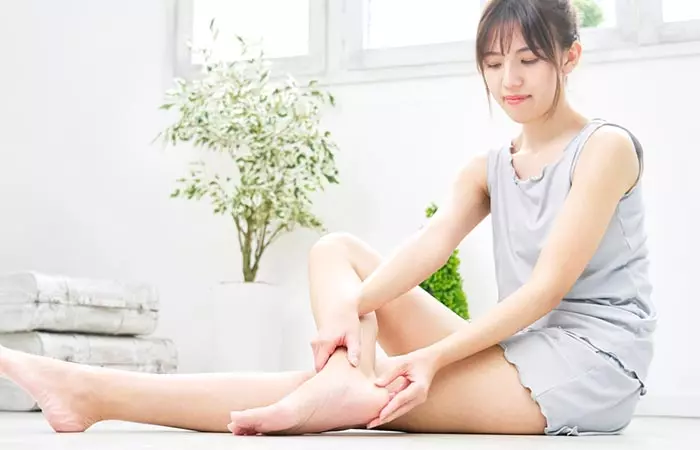
There are many factors responsible for dry, cracked heels. There are no oil glands present in the skin of your heels. Thus, if proper care is not taken, they get dry, thereby causing the skin to crack and bleed. Other reasons for cracked heels are:
- Skin conditions, like psoriasis and eczema.
- Medical conditions, like thyroid, diabetes, and hormonal imbalance.
- Exposing heels to pollution.
- Excessive walking and standing on hard floors for long.
What Are The Symptoms Of Dry, Cracked Heels?
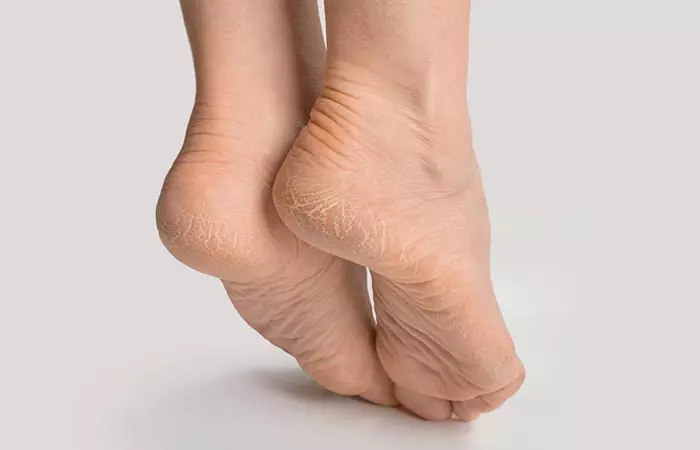
The symptoms of dry and cracked heels are:
- Dryness around the heel area and in the area on the underside of your feet, just below the toes.
- Red and flaky patches of skin.
- Skin peeling in thin strands.
- Cracks and ridges in the skin.
- Itchiness
- Bleeding from the cracks.
- Discharge from the cracks due to a developed infection.
Prevention is better than cure. There are many home remedies and lifestyle tips to prevent cracking of heels. Take a look.
Tips To Prevent Cracked Heels
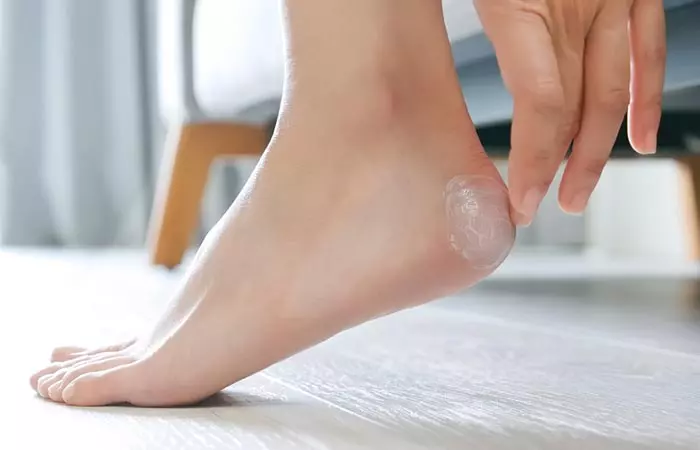
- Proper moisturization is the first step to prevent dry heels.
- Wearing comfortable shoes, refraining from excessive walking, and avoiding overexposure to pollution are the easiest ways to prevent cracked heels.
- Scrubbing your heels regularly with pumice stone and dipping them in warm salt water or water with lemon juice added to it can keep them clean and soft.
- Relaxing your feet and indulging in foot massages with oil also prevents dryness and cracked heels.
- Drink plenty of water to keep your skin hydrated and supple.
Infographic: Essential Oils For Cracked Heels
Cracked heels can be painful and need to be taken care of to mitigate the risk of infections or other complications. Along with plant oils, certain essential oils like lavender oil and peppermint oil can help in healing cracked heels and providing protection against fungal or bacterial infections.
Check out the infographic below to learn more about the best essential oils you can use in foot soaks or DIY foot creams to heal broken and dry heels. Illustration: StyleCraze Design Team

Cracked heels or heel fissures can not only be uncomfortable and unsightly but may also cause bleeding and increase the risk of health complications and infections. As the heels of the feet do not contain oil glands, the skin tends to get dry, and a lack of moisturizer application, exposure to pollutants, and certain medical conditions like diabetes, eczema, thyroid, and psoriasis can worsen the problem. You can apply different home remedies to help the healing process. Rosewater, glycerine, oatmeal, rice flour, petroleum jelly, paraffin wax, honey, and aloe vera are a few ingredients that you can use to make home remedies for cracked feet. In addition, keep your feet well moisturized, avoid exposing them to pollution, de-stress your feet, take foot massages using natural oils and treat underlying medical conditions to prevent dry and cracked heels. However, some of the home remedies may not work if there is skin bleeding due to the occurrence of skin fissures. They are painful and may require further medical assistance from a professional.
Now that you know how to get rid of cracked heels, what are you waiting for? Try out these home remedies for cracked heels and see the difference.
Frequently Asked Questions
Does diabetes cause cracked heels?
Yes, diabetes is one of the causes of cracked heels (23). Uncontrolled blood sugar levels damage the nerves of the feet, which leads to dry skin. As there are no oil glands present on the skin of the feet, they are usually dry. The thick dry skin on the heels, known as callus, can develop heel fissures. As it is overly dry, it cracks and bleeds. People with diabetes are prone to serious infections from cracked heels that are difficult to treat. Hence, taking good care of the feet and treating cracked heels in the initial phase is advisable for individuals with diabetes.
How long will it take to cure cracked heels?
With proper care and relaxation, it takes about 7-14 days to see the first signs of healing. This depends on how badly your heels are cracked, skin issues, like psoriasis and eczema, or medical problems, like diabetes and hormonal imbalance.
How to heal cracked feet overnight?
Apply a heavy, oil-based moisturizer to your feet and slip on a pair of thin cotton socks. Keep it on overnight and scrub off the softened dead skin cells using a pumice stone and lukewarm water in the morning.
Why do only heels crack but not other parts of the feet?
As there are no oil glands on the skin of your feet, this area tends to become dry. The skin on the heels is thick and dry, and with excessive activity, it tends to bleed and crack. Standing on a cold or hard floor for long, intensive walking, and being overweight are some of the reasons heels crack. The middle part of the foot is hollow and well secured. Most of the body’s weight is borne by the heels. As they are dry and bloated, they tend to crack easily. At times, these cracks go deep and start bleeding.
Can a particular diet help improve the condition of cracked heels?
The deficiency of Vitamin E, calcium, iron, zinc, or omega-3 fatty acids may lead to cracked heels. You can include these nutrients in your diet to improve the condition of cracked heels.
Can home remedies for cracked heels be used in conjunction with other foot care treatments?
Yes. In fact, you must use moisturizing foot care treatments after remedies, such as soaks, scrubs, and wash-off masks as they can have a drying effect on the skin. These remedies are natural so you may use even leave-on remedies, such as aloe vera, vitamin oil, and shea butter with your treatments unless instructions on the product advises against it.
Are there any risks or potential side effects associated with using home remedies for cracked heels?
It depends on what ingredients are used in the remedies and if you are allergic to those ingredients. Always do a patch test when using an unfamiliar ingredient in your remedies.
Illustration: Home Remedies For Cracked Heels + Causes & Prevention Tips
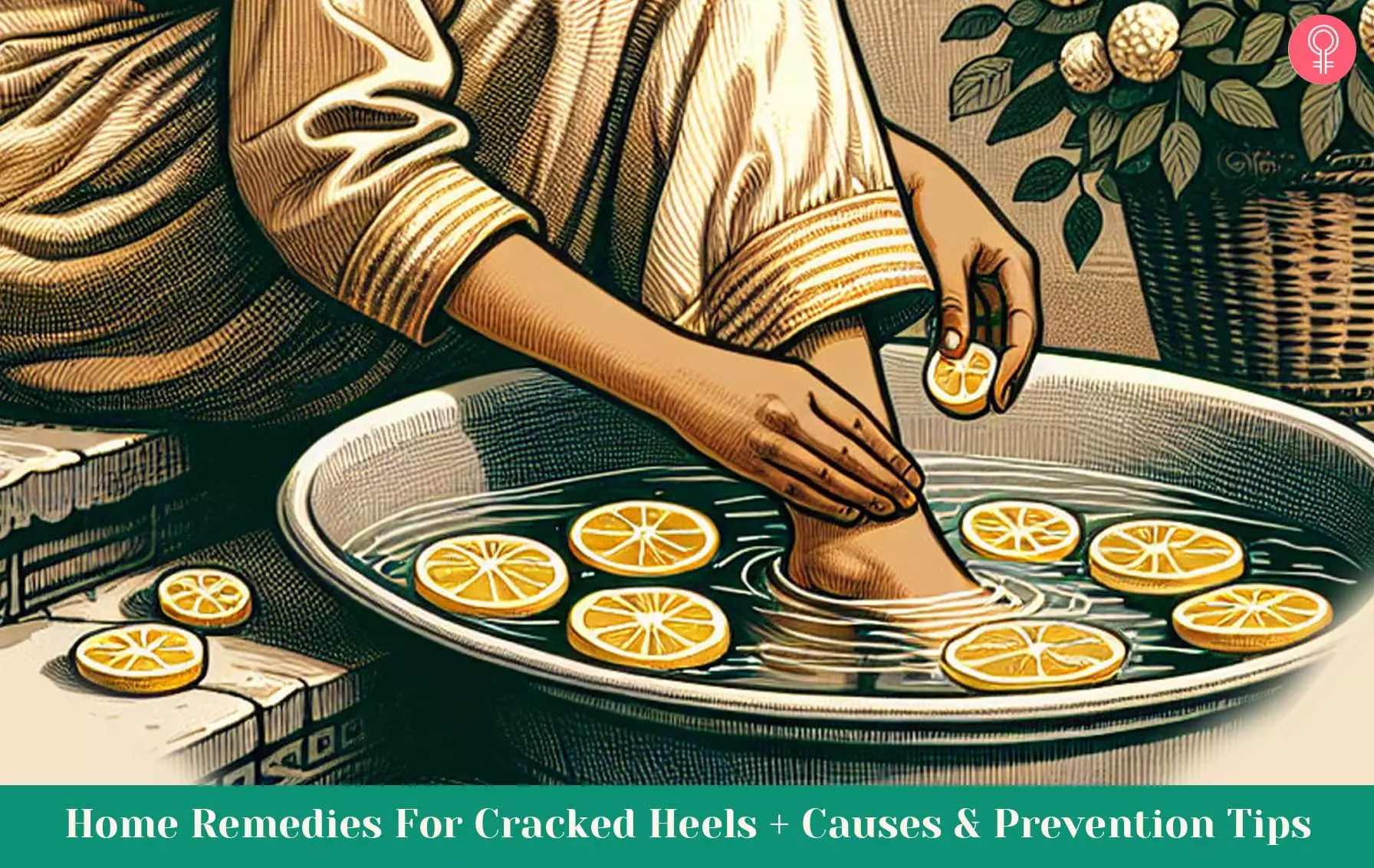
Image: Stable Diffusion/StyleCraze Design Team
Discover the amazing home remedy to remove cracked heels fast overnight! Get great results with this simple and easy solution. Scroll down to watch the video.
Personal Experience: Source
StyleCraze's articles are interwoven with authentic personal narratives that provide depth and resonance to our content. Below are the sources of the personal accounts referenced in this article.
i. DIY Pedicure For Cracked Heels | How To Treat Cracked Heels At Homehttps://www.youtube.com/watch?v=u-3UCMq9gzs
References
Articles on StyleCraze are backed by verified information from peer-reviewed and academic research papers, reputed organizations, research institutions, and medical associations to ensure accuracy and relevance. Read our editorial policy to learn more.
- “National Foot Health Assessment 2012” Institute for Preventive Foot Health.
https://www.ipfh.org/images/research_materials/2012_National_Foot_Health_Assessment_June_2012.pdf - Boskabady, Mohammad Hossein et al. “Pharmacological effects of rosa damascena.” Iranian Journal of Basic Medical Sciences 14,4 (2011): 295-307.
https://www.ncbi.nlm.nih.gov/pmc/articles/PMC3586833/ - Thring, Tamsyn Sa et al. “Antioxidant and potential anti-inflammatory activity of extracts and formulations of white tea, rose, and witch hazel on primary human dermal fibroblast cells.” Journal of Inflammation (London, England) 8,1 27.
https://www.ncbi.nlm.nih.gov/pmc/articles/PMC3214789/ - Sethi, Anisha et al. “Moisturizers: The Slippery Road.” Indian Journal of Dermatology 61,3 (2016): 279-87.
https://www.ncbi.nlm.nih.gov/pmc/articles/PMC4885180/ - Guidoni, M et al. “Fatty acid composition of vegetable oil blend and in vitro effects of pharmacotherapeutical skin care applications.” Brazilian Journal Of Medical And Biological Research = revista brasileira de pesquisas medicas e biologicas 52,2 e8209.
https://www.ncbi.nlm.nih.gov/pmc/articles/PMC6376324/ - Dreher, Mark L, and Adrienne J Davenport. “Hass avocado composition and potential health effects.” Critical Reviews In Food Science And Nutrition 53,7 (2013): 738-50.
https://www.ncbi.nlm.nih.gov/pmc/articles/PMC3664913/ - Mahajan, P. M., et al. “Wax therapy for dry feet in leprosy.” Indian journal of leprosy 4 (1995): 383-388.
https://pubmed.ncbi.nlm.nih.gov/8849915/ - Burlando, Bruno, and Laura Cornara. “Honey in dermatology and skin care: a review.” Journal of Cosmetic Dermatology 12,4 (2013): 306-13.
https://pubmed.ncbi.nlm.nih.gov/24305429/ - Beretta, Silvia, et al. “Fermented Rice Flour in Pediatric Atopic Dermatitis.” Dermatitis2 (2015): 104-106.
https://home.liebertpub.com/publications/dermatitis/672/overview - Cižinauskas, Vytis, et al. “Skin penetration enhancement by natural oils for dihydroquercetin delivery.” Molecules9 (2017): 1536.
https://www.ncbi.nlm.nih.gov/pmc/articles/PMC6151382/ - Pazyar, Nader et al. “Oatmeal in dermatology: a brief review.” Indian Journal of Dermatology, Venereology and Leprology 78,2 (2012): 142-5.
https://pubmed.ncbi.nlm.nih.gov/22421643/ - Pathak, Niti et al. “Value addition in sesame: A perspective on bioactive components for enhancing utility and profitability.” Pharmacognosy reviews 8,16 (2014): 147-55.
https://www.ncbi.nlm.nih.gov/pmc/articles/PMC4127822/ - Agero, Anna Liza C, and Vermén M Verallo-Rowell. “A randomized double-blind controlled trial comparing extra virgin coconut oil with mineral oil as a moisturizer for mild to moderate xerosis.” Dermatitis : Contact, Atopic, Cccupational, Drug 15,3 (2004): 109-16.
https://pubmed.ncbi.nlm.nih.gov/15724344/ - Lima, E B C et al. “Cocos nucifera (L.) (Arecaceae): A phytochemical and pharmacological review.” brazilian Journal Of Medical And Biological Research = Revista Brasileira De Pesquisas Medicas E Biologicas 48,11 (2015): 953-64.
https://www.ncbi.nlm.nih.gov/pmc/articles/PMC4671521/ - Quandt, Sara A et al. “Home Remedy Use Among African American and White Older Adults.” Journal of the National Medical Association 107,2 (2015): 121-9.
https://www.ncbi.nlm.nih.gov/pmc/articles/PMC4631220/ - Kapuscinska, Alicja, and Izabela Nowak. “Use of organic acids in acne and skin discolorations therapy (Online) 69 374-83.
https://pubmed.ncbi.nlm.nih.gov/25811473/ - Rudolf, R D. “The use of Epsom salts, historically considered.” Canadian Medical Association journal 7,12 (1917): 1069-71.
https://www.ncbi.nlm.nih.gov/pmc/articles/PMC1584988/ - Gröber, Uwe et al. “Myth or Reality-Transdermal Magnesium?.” Nutrients 9,8 813.
https://www.ncbi.nlm.nih.gov/pmc/articles/PMC5579607/ - Surjushe, Amar et al. “Aloe vera: a short review.” Indian Journal of Dermatology 53,4 (2008): 163-6.
https://www.ncbi.nlm.nih.gov/pmc/articles/PMC2763764/ - Pazyar, Nader, et al. “A review of applications of tea tree oil in dermatology.” International journal of dermatology7 (2013): 784-790.
https://pubmed.ncbi.nlm.nih.gov/22998411/ - Keen, Mohammad Abid, and Iffat Hassan. “Vitamin E in dermatology.” Indian Dermatology Online Journal 7,4 (2016): 311-5.
https://www.ncbi.nlm.nih.gov/pmc/articles/PMC4976416/ - Israel, Malachi Oluwaseyi. “Effects of topical and dietary use of shea butter on animals.” Am J Life Sci5 (2014): 303.
https://www.researchgate.net/publication/277021242_Effects_of_topical_and_dietary_use_of_shea_butter_on_animals - Mishra, Satish Chandra et al. “Diabetic foot.” BMJ (Clinical research ed.) 359 j5064.
https://www.ncbi.nlm.nih.gov/pmc/articles/PMC5688746/
Read full bio of Dr. CP Thajudheen
Read full bio of Shaheen Naser
Read full bio of Anjali Sayee
Read full bio of Swathi E







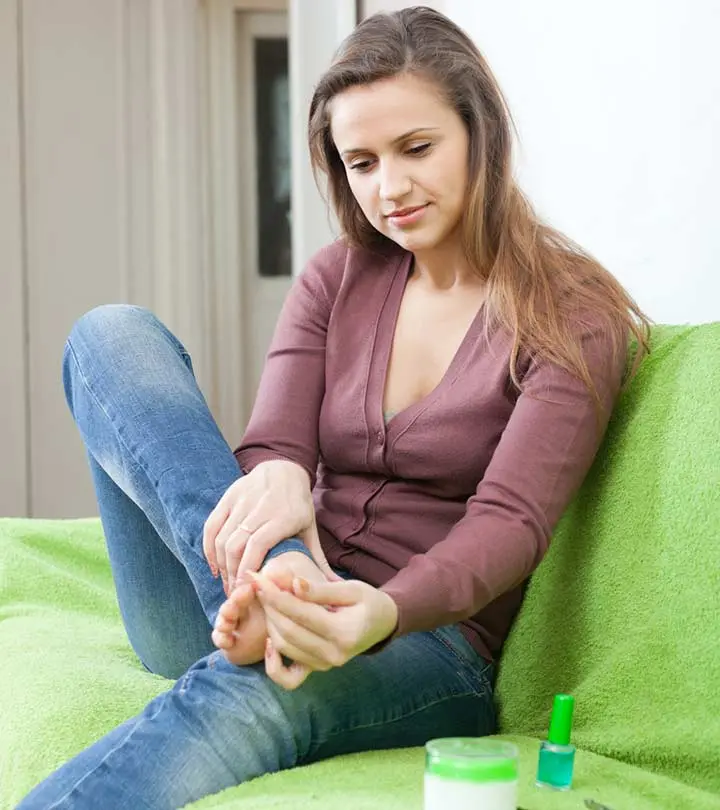



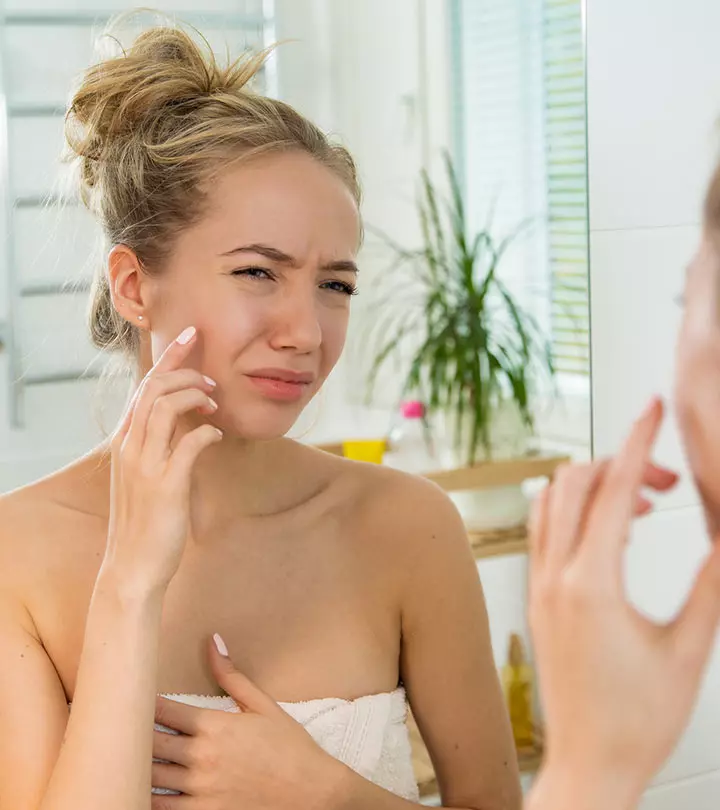
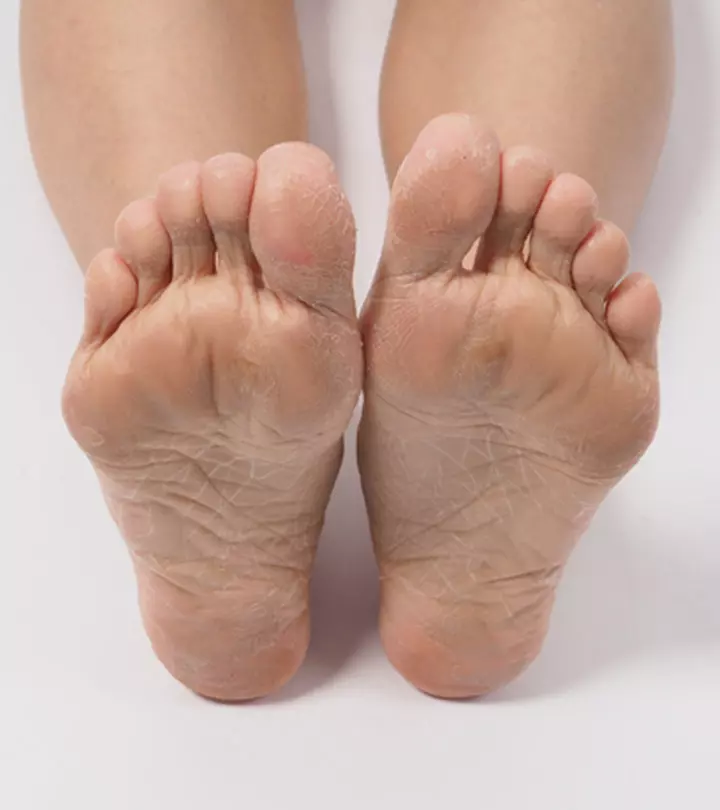
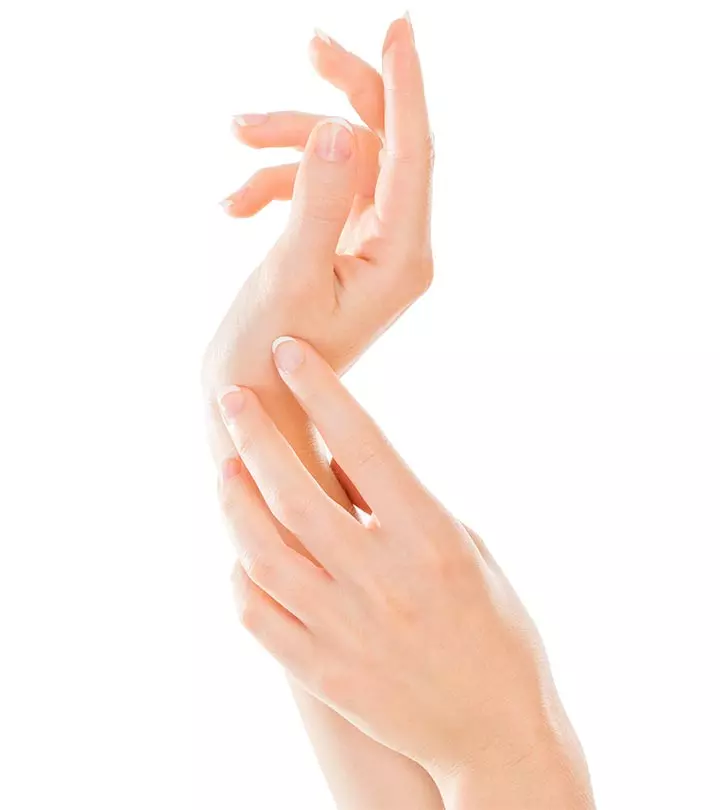
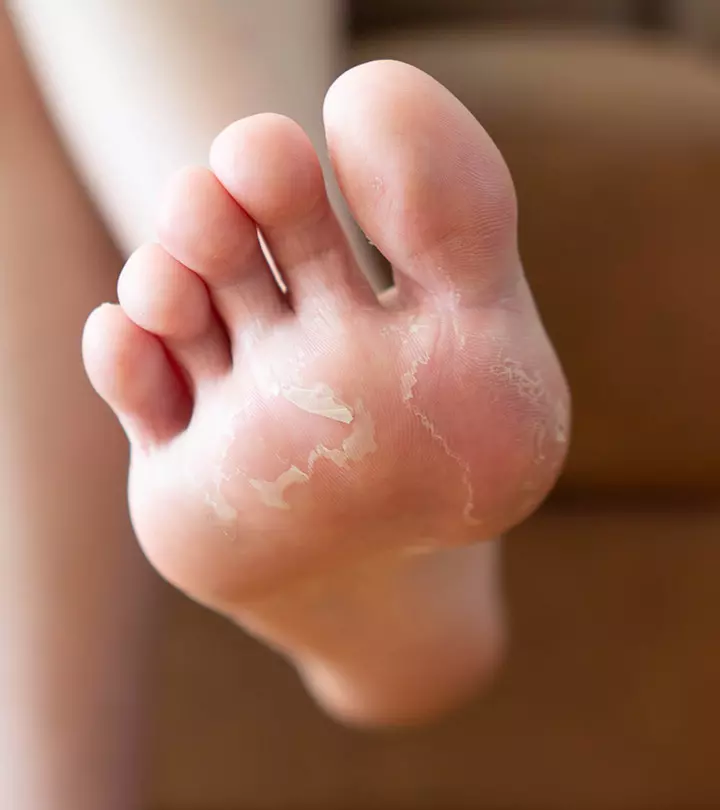

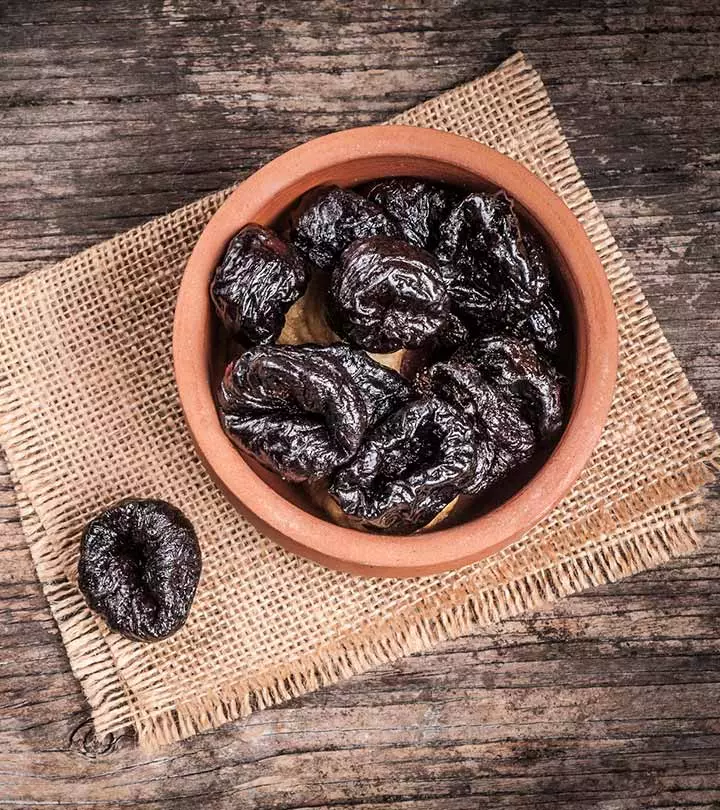
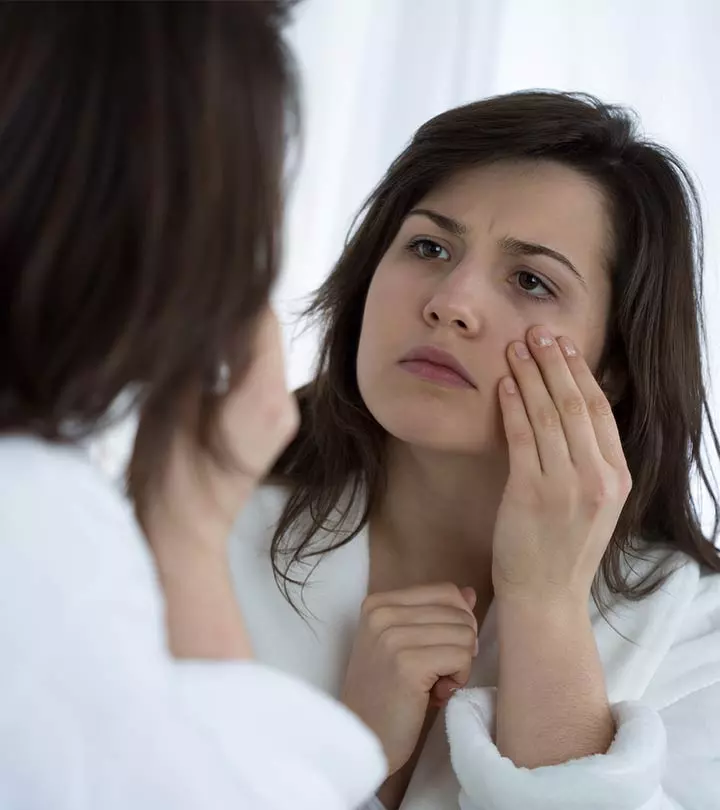

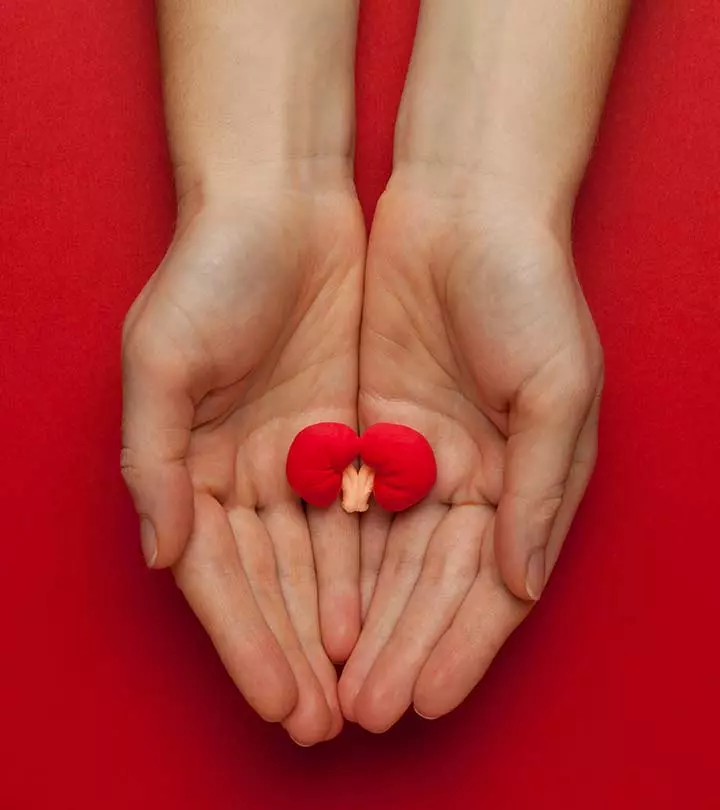



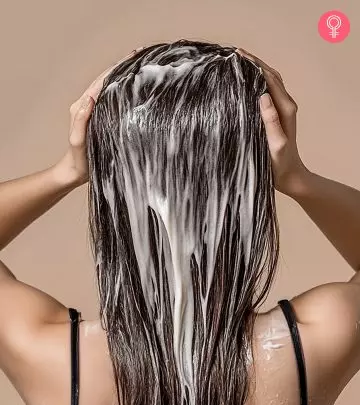




Community Experiences
Join the conversation and become a part of our empowering community! Share your stories, experiences, and insights to connect with other beauty, lifestyle, and health enthusiasts.